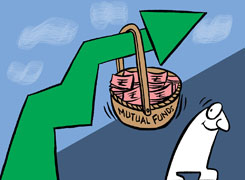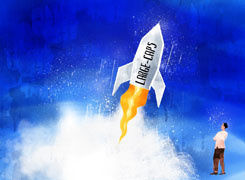Ramalingam Kalirajan |10908 Answers |Ask -Follow
Mutual Funds, Financial Planning Expert - Answered on Oct 24, 2024
He has an MBA in finance from the University of Madras and is a certified financial planner.
He is the director and chief financial planner at Holistic Investment, a Chennai-based firm that offers financial planning and wealth management advice.... more

Midcap 150 etf will grow from today, up to 10 years , already I have invested in Zerodha TCS, Infosys stock I have purchased, myself, Jitendra, please connect me in my email id given,
Potential of Midcap Stocks
Higher Growth Potential: Midcap companies often grow faster than large-cap companies. They have room to expand, and over the next 10 years, they can potentially outperform larger companies.
Risk Factor: With midcap stocks, the volatility is higher compared to large-cap. While they can offer better returns, the risk is also higher. There could be phases of market corrections or economic slowdowns that may impact midcap stocks more than large-cap ones.
Actively Managed Funds Over ETFs
While you’re considering a Midcap ETF, actively managed funds might be a better option for the following reasons:
Flexibility: Actively managed funds can adjust portfolios based on market trends. Fund managers can shift between sectors, reducing risks or capitalizing on opportunities, something ETFs cannot do.
Avoiding Underperformance: ETFs, like the Midcap 150, track an index. They can’t outperform it, so if the midcap segment underperforms, your returns will be lower. In contrast, actively managed funds can outperform the market in both upturns and downturns.
Disadvantages of ETFs Compared to Actively Managed Funds
No Active Decision-Making: ETFs don’t allow for active decision-making by fund managers. If there’s a market downturn, an ETF will continue to hold all its stocks, even if some are underperforming. In actively managed funds, a fund manager can sell or buy based on market conditions.
Limited Customization: With ETFs, you can’t customize the portfolio. If certain stocks or sectors are not performing, you’re still stuck with them.
Potential Tax Implications: If you decide to exit the ETF in a few years, you should consider tax on gains. Equity funds attract LTCG at 12.5% for gains above Rs 1.25 lakh, while STCG is taxed at 20%.
Your Current Portfolio and Midcap Strategy
Since you’ve already invested in strong large-cap companies like TCS and Infosys, your portfolio has a solid foundation. These are blue-chip stocks with a stable growth potential, which gives your portfolio strength.
To balance this:
Diversification is Key: It’s important to have a mix of large-cap and midcap stocks for a balanced risk-reward ratio. By adding midcap exposure through a fund or ETF, you diversify across different market segments, which can help balance your overall risk.
Avoid Over-Concentration: Since TCS and Infosys are large-cap stocks, and you’re now considering midcap investments, ensure that your portfolio doesn’t become over-concentrated in any particular sector.
Final Insights
Your long-term goal of holding midcap investments for 10 years can pay off, but consider the higher risks involved. While ETFs offer simplicity, actively managed funds provide flexibility, which can be critical in volatile markets. Since you’re already invested in strong large-cap stocks, adding midcap exposure can balance your portfolio. Ensure you diversify well to avoid over-concentration in any sector.
It’s always good to align your investment decisions with your risk tolerance and long-term goals.
Best Regards,
K. Ramalingam, MBA, CFP,
Chief Financial Planner,
www.holisticinvestment.in
https://www.youtube.com/@HolisticInvestment
आप नीचे ऐसेही प्रश्न और उत्तर देखना पसंद कर सकते हैं
Ramalingam Kalirajan |10908 Answers |Ask -Follow
Mutual Funds, Financial Planning Expert - Answered on May 09, 2024
Ramalingam Kalirajan |10908 Answers |Ask -Follow
Mutual Funds, Financial Planning Expert - Answered on Apr 11, 2024
Ramalingam Kalirajan |10908 Answers |Ask -Follow
Mutual Funds, Financial Planning Expert - Answered on May 15, 2024
Ramalingam Kalirajan |10908 Answers |Ask -Follow
Mutual Funds, Financial Planning Expert - Answered on Sep 17, 2024
Ramalingam Kalirajan |10908 Answers |Ask -Follow
Mutual Funds, Financial Planning Expert - Answered on Dec 28, 2024
Ramalingam Kalirajan |10908 Answers |Ask -Follow
Mutual Funds, Financial Planning Expert - Answered on Dec 20, 2025
Ramalingam Kalirajan |10908 Answers |Ask -Follow
Mutual Funds, Financial Planning Expert - Answered on Dec 20, 2025
Naveenn Kummar |237 Answers |Ask -Follow
Financial Planner, MF, Insurance Expert - Answered on Dec 20, 2025
Ramalingam Kalirajan |10908 Answers |Ask -Follow
Mutual Funds, Financial Planning Expert - Answered on Dec 19, 2025
Nayagam P P |10859 Answers |Ask -Follow
Career Counsellor - Answered on Dec 19, 2025
Ramalingam Kalirajan |10908 Answers |Ask -Follow
Mutual Funds, Financial Planning Expert - Answered on Dec 19, 2025
Ramalingam Kalirajan |10908 Answers |Ask -Follow
Mutual Funds, Financial Planning Expert - Answered on Dec 19, 2025
Ramalingam Kalirajan |10908 Answers |Ask -Follow
Mutual Funds, Financial Planning Expert - Answered on Dec 19, 2025
Radheshyam Zanwar |6751 Answers |Ask -Follow
MHT-CET, IIT-JEE, NEET-UG Expert - Answered on Dec 19, 2025
Radheshyam Zanwar |6751 Answers |Ask -Follow
MHT-CET, IIT-JEE, NEET-UG Expert - Answered on Dec 19, 2025
























